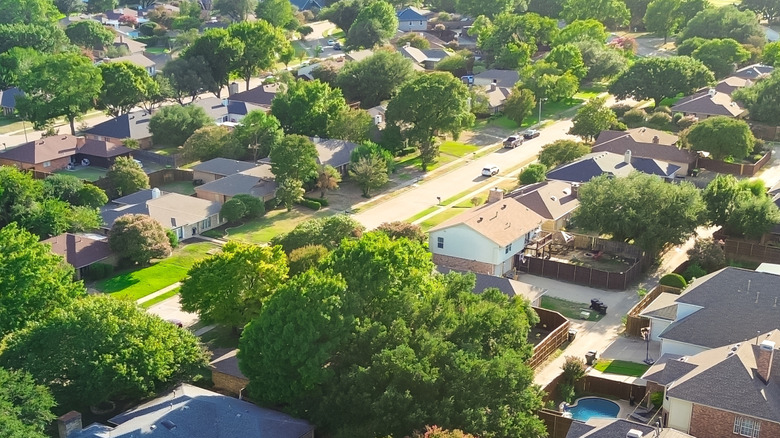Is A Sidewalk Part Of Your Property? Everything You Should Legally Know
Your yard belongs to you, while the street belongs to the city. Sitting in between the two, the sidewalk is a bit of a mystery. Especially if your sidewalk is damaged or in need of an update, you might be wondering who should be responsible — you or the city. While your property line can encompass the sidewalk, the sidewalk itself is likely owned by the city if it is adjacent to a city street. Even if the sidewalk is private, it might not belong to you. The sidewalk could be owned by your Homeowners Association (HOA), making it community property.
An ugly sidewalk can damage your home's curb appeal and hurt your chances of selling your home, but before you think about breaking out the sledgehammer to make some rash changes, you should find out who the sidewalk belongs to. Regardless of who they're owned by, sidewalks can still be subject to city regulations, so you should still learn where your property lines are and what that means for the maintenance of your sidewalk.
How property lines (and sidewalk ownership) are determined
Your property line may end at the sidewalk, but it might also extend all the way to the street. The latter can make the issue of who owns the sidewalk slightly more complicated. Because of this, some municipalities make sure that your property line does not encompass the sidewalk to avoid potential legal battles, but that is not always the case.
Public right-of-way can also complicate the matter of sidewalk ownership. This precept allows the sidewalk to belong to the city for public use even if the land beneath belongs to you. Consult a land surveyor to determine the exact dimensions of your property and familiarize yourself with city public right-of-way laws. While you probably won't get in trouble for using chalk on the sidewalk in front of your home, you should be mindful of making changes to it that won't wash away with the next rain, since it might technically not belong to you.
Your legal responsibility for your sidewalk
Despite the fact that you likely don't own the sidewalk, you might be responsible for it. In many cities, a property owner is tasked with caring for the communal sidewalk in front of their property, which can include fixing uneven slabs and removing ice and snow to prevent injuries to walkers. When it comes to structural fixes, property owners are responsible for notifying their Department of Streets about issues so the city can send someone out to assess and repair the damage. Snow and ice removal, however, are up to the property owner, so keep salt and a shovel on hand in the colder months. If someone is injured on the sidewalk in front of your property, you could be held liable.
If the city isn't moving fast enough for you, you could be contemplating repairing or updating your sidewalk on your own. Hold your horses. Since the sidewalk likely does not belong to you, you might be barred from modifying it yourself, especially if you see red markings on the pavement outside of your house. According to the American Public Works Association Uniform Color Code, those red markings indicate the presence of electric utilities such as power lines, conduits, or cable beneath the ground, which will need to be handled carefully if the sidewalk is removed or changed. To modify your sidewalk, you or your contractor will need to obtain the necessary permits from your city's Bureau of Engineering, even though you are tasked with the sidewalk's upkeep.


